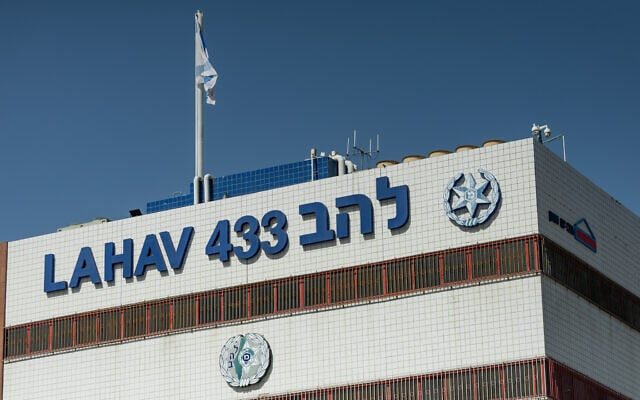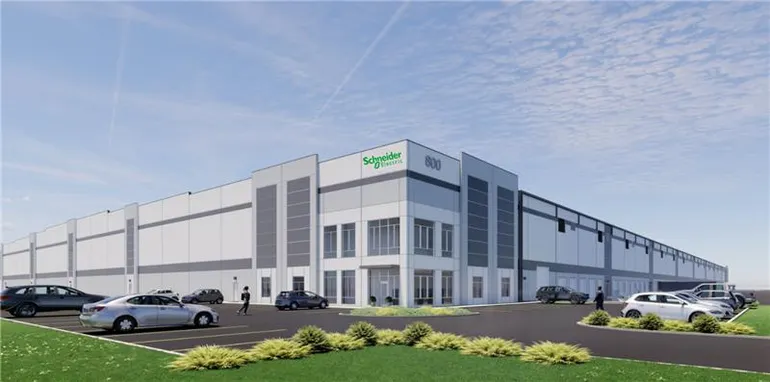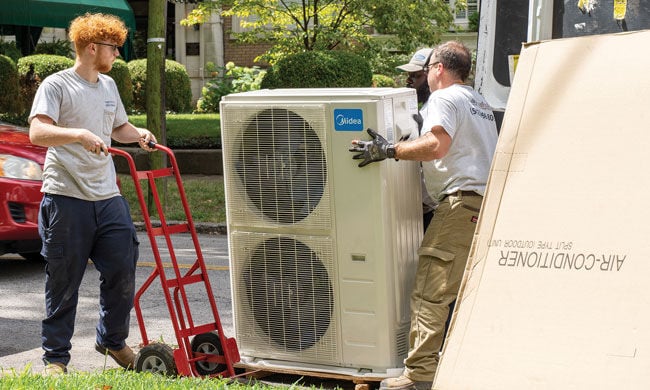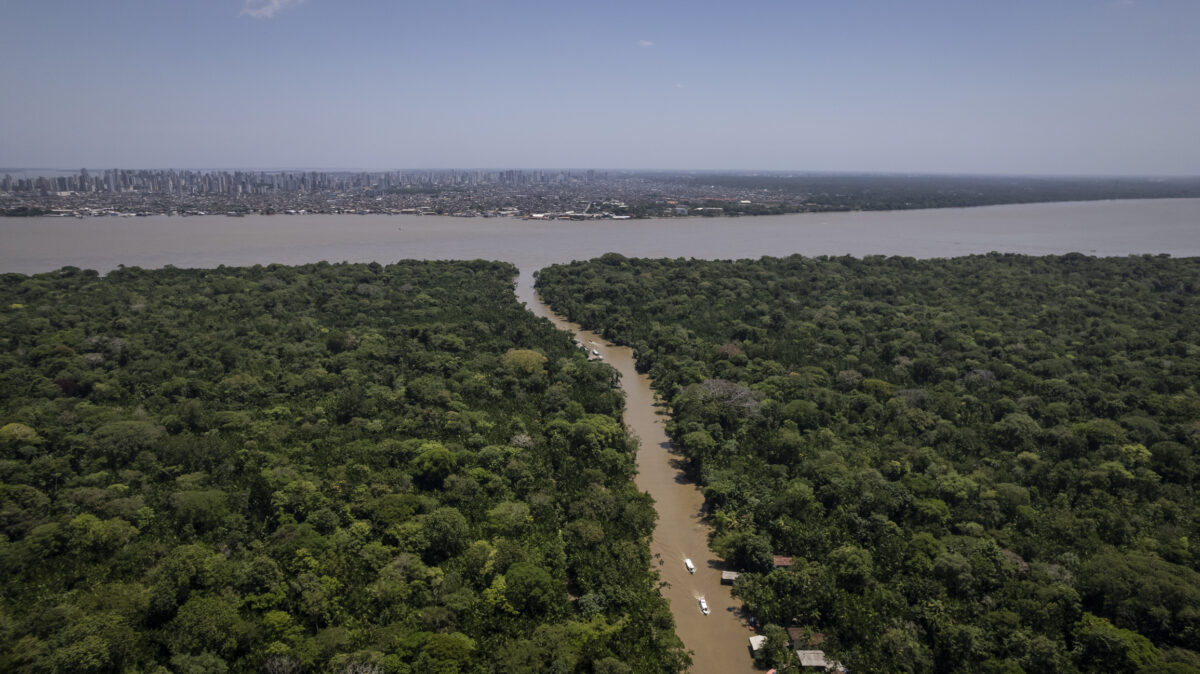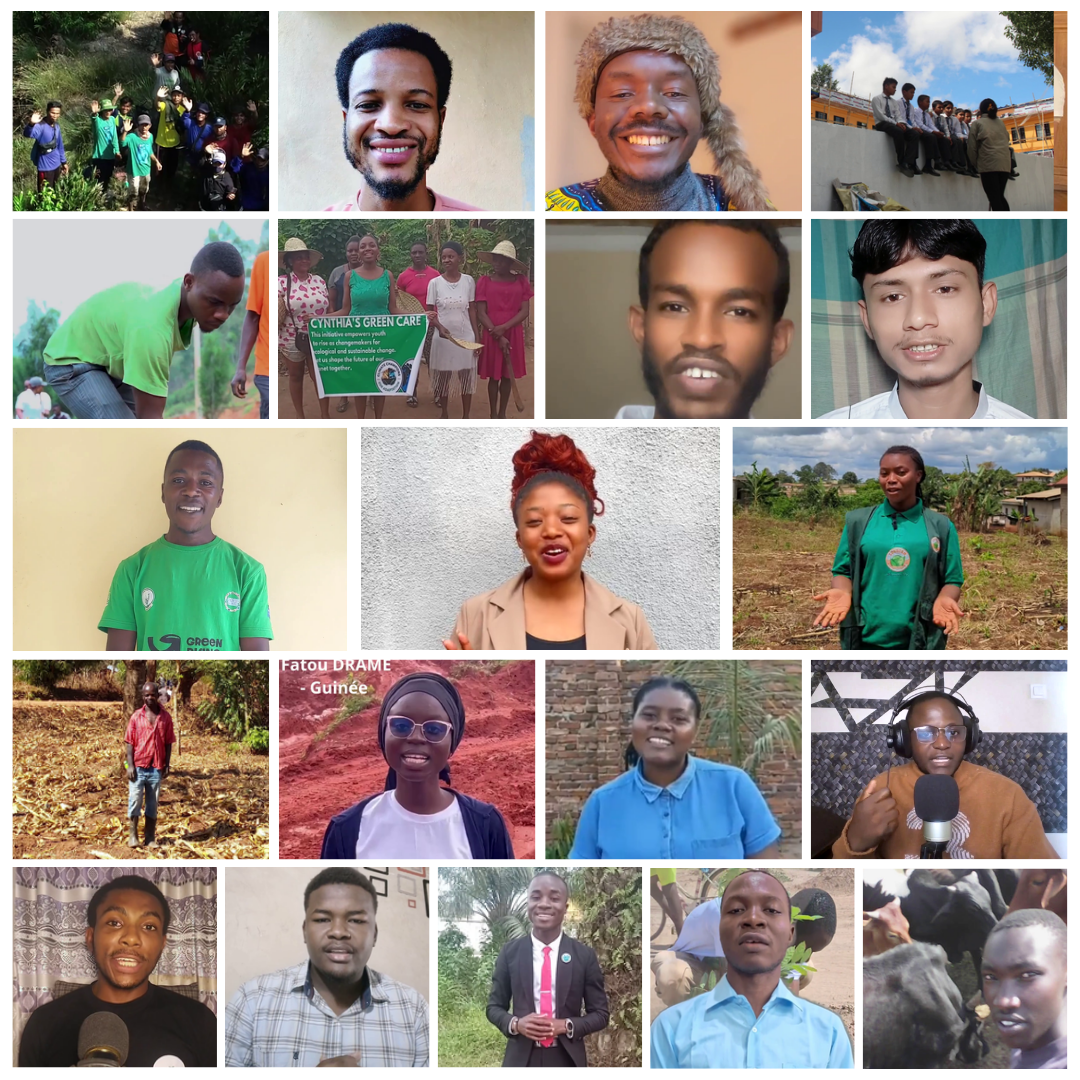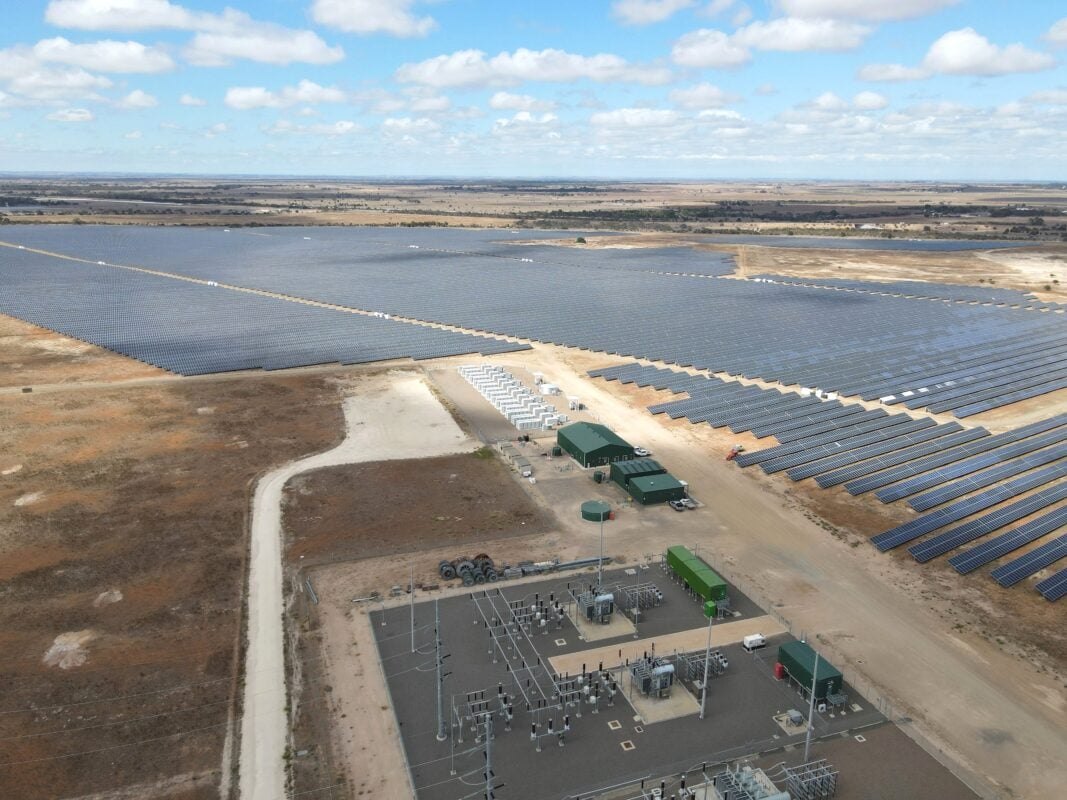Wisconsin OKs Nation’s First CO2 Battery Storage Project – Business Facilities

Report on the Columbia Energy Storage Project and Sustainable Development
Project Overview and Regulatory Approval
The Public Service Commission of Wisconsin has granted approval for the Columbia Energy Storage Project, a pioneering long-duration energy storage initiative in the United States. Spearheaded by Alliant Energy, this project represents a significant advancement in building a resilient and sustainable energy future. The project is a collaborative effort involving Wisconsin Public Service Corporation and Madison Gas and Electric.
The facility will be constructed in Pacific, Wisconsin, near the existing Columbia Energy Center. The projected timeline is as follows:
- Construction Commencement: 2026
- Project Completion and Operation: End of 2027
Technological Innovation and Contribution to SDG 9
The project will utilize an innovative CO2 Battery system developed by Energy Dome. This technology is central to achieving Sustainable Development Goal 9: Industry, Innovation, and Infrastructure by building resilient infrastructure and fostering industrial innovation.
- Mechanism: The closed-loop system uses grid energy to compress CO2 into a liquid for storage. When energy is required, the liquid expands back into a gas, powering a turbine to generate electricity.
- Sustainable Materials: In alignment with SDG 12: Responsible Consumption and Production, the CO2 Battery avoids the use of lithium and other rare-earth elements. It is constructed from readily available, off-the-shelf components, ensuring a sustainable and reliable supply chain.
- Scalability: The modular design provides a scalable pathway for storing large amounts of intermittent renewable energy, accelerating the transition to a clean energy economy.
Alignment with Sustainable Development Goals (SDGs)
The Columbia Energy Storage Project is strategically aligned with several key United Nations Sustainable Development Goals, positioning it as a critical component of a balanced and sustainable energy mix.
SDG 7: Affordable and Clean Energy
The project directly supports the targets of SDG 7 by enhancing the reliability and accessibility of clean energy.
- It will provide grid stability and resilience, ensuring a consistent power supply.
- The system can store enough energy to power approximately 18,000 homes for 10 hours, improving energy security.
- By enabling the storage of renewable energy, it facilitates a greater share of renewables in the overall energy mix.
SDG 11: Sustainable Cities and Communities
By bolstering the power grid, the project contributes to SDG 11 by making communities more resilient and sustainable. The reliable energy supply is crucial for the functioning of community services and economic activity, particularly as energy demands grow.
SDG 13: Climate Action
The project is a direct measure for SDG 13: Climate Action. Long-duration energy storage is essential for overcoming the intermittency of renewable sources like wind and solar. By providing a reliable method to store and dispatch clean energy, the CO2 battery system directly enables the displacement of fossil fuel-based power generation, thereby mitigating climate change.
Analysis of Sustainable Development Goals (SDGs) in the Article
1. Which SDGs are addressed or connected to the issues highlighted in the article?
-
SDG 7: Affordable and Clean Energy
- The article focuses on the “Columbia Energy Storage Project,” a new energy system designed to ensure a reliable power supply. It directly addresses the need for modern energy solutions by mentioning its role in creating a “strong and resilient energy future” and delivering “reliable, cost-effective energy.” The project’s ability to store energy from intermittent renewable sources is key to advancing clean energy.
-
SDG 9: Industry, Innovation, and Infrastructure
- The project represents a significant advancement in industrial technology and infrastructure. The article highlights the use of “cutting-edge technology” with the “Energy Dome’s safe, reliable CO2 battery,” which is described as the “first long-duration energy storage system of its kind in the United States.” This investment in innovative and “resilient” infrastructure is central to SDG 9.
-
SDG 11: Sustainable Cities and Communities
- The project directly benefits communities by enhancing the local power grid. The article states it will “deliver enough electricity to power approximately 18,000 Wisconsin homes” and “bolster the power grid to benefit Wisconsin customers.” This contributes to making cities and human settlements inclusive, safe, resilient, and sustainable by ensuring access to basic services like electricity.
-
SDG 13: Climate Action
- The energy storage system is a critical tool for climate action. By providing a way to “store massive amounts of intermittent renewable energy,” the project helps reduce reliance on fossil fuels and facilitates a shift to a cleaner energy mix. The article explicitly states that this technology will “accelerate the energy transition,” which is a direct measure to combat climate change and its impacts.
2. What specific targets under those SDGs can be identified based on the article’s content?
-
SDG 7: Affordable and Clean Energy
- Target 7.1: Ensure universal access to affordable, reliable and modern energy services. The project aims to deliver “reliable, cost-effective energy” and “bolstering the power grid to benefit Wisconsin customers,” directly supporting this target.
- Target 7.2: Increase substantially the share of renewable energy in the global energy mix. The system is designed to “store massive amounts of intermittent renewable energy,” which is essential for increasing the viability and use of renewables in the energy grid.
- Target 7.a: Enhance international cooperation to facilitate access to clean energy research and technology… and promote investment in energy infrastructure and clean energy technology. The project is an investment in and implementation of “cutting-edge technology” for “long-duration energy storage,” aligning with this target.
-
SDG 9: Industry, Innovation, and Infrastructure
- Target 9.1: Develop quality, reliable, sustainable and resilient infrastructure. The article describes the project as a way to build a “strong and resilient energy future” and “boost grid stability,” which directly relates to developing resilient infrastructure.
- Target 9.4: Upgrade infrastructure and retrofit industries to make them sustainable… with greater adoption of clean and environmentally sound technologies. The adoption of the “CO2 Battery” technology, which “uses no lithium or rare-earth elements,” represents an upgrade to a more sustainable and environmentally sound technological process for energy storage.
-
SDG 11: Sustainable Cities and Communities
- Target 11.1: Ensure access for all to adequate, safe and affordable housing and basic services. The project contributes to this by providing the basic service of electricity to “approximately 18,000 Wisconsin homes.”
- Target 11.b: …implementing integrated policies and plans towards… resource efficiency, mitigation and adaptation to climate change, resilience to disasters… The project is part of “Alliant Energy’s Energy Blueprint,” an integrated plan to build a “resilient energy future” and “accelerate the energy transition,” thus contributing to climate mitigation and resilience.
-
SDG 13: Climate Action
- Target 13.1: Strengthen resilience and adaptive capacity to climate-related hazards. By creating a system that will “boost grid stability” and “improve resilience,” the project strengthens the energy infrastructure’s capacity to withstand potential disruptions, including those exacerbated by climate change.
- Target 13.2: Integrate climate change measures into… strategies and planning. The project is part of a corporate strategy (“Alliant Energy’s Energy Blueprint”) that explicitly aims to “accelerate the energy transition,” demonstrating the integration of climate action into long-term planning.
3. Are there any indicators mentioned or implied in the article that can be used to measure progress towards the identified targets?
- Yes, the article provides both quantitative and qualitative indicators.
-
Quantitative Indicators:
- Number of households served: The project will power “approximately 18,000 Wisconsin homes,” which is a direct measure of its impact on energy access (Target 7.1 and 11.1).
- Energy storage duration: The system can provide power for “10 hours on a single charge,” indicating its capacity and reliability (Target 7.1 and 9.1).
-
Qualitative Indicators:
- Adoption of innovative technology: The implementation of the “first long-duration energy storage system of its kind” using a “CO2 battery” serves as an indicator of progress in innovation and clean technology adoption (Target 7.a and 9.4).
- Contribution to energy transition: The project’s stated goal to “store massive amounts of intermittent renewable energy” and “accelerate the energy transition” is a key qualitative indicator of its contribution to climate action (Target 7.2 and 13.2).
- Sustainable material use: The fact that the technology “uses no lithium or rare-earth elements” is an indicator of more sustainable production and consumption patterns within the energy industry (Target 9.4).
4. Summary Table of SDGs, Targets, and Indicators
| SDGs | Targets | Indicators Identified in the Article |
|---|---|---|
| SDG 7: Affordable and Clean Energy |
7.1: Ensure universal access to affordable, reliable and modern energy services. 7.2: Increase the share of renewable energy. 7.a: Promote investment in clean energy technology. |
– Provides “reliable, cost-effective energy.” – System designed to “store massive amounts of intermittent renewable energy.” – Investment in “long-duration energy storage.” |
| SDG 9: Industry, Innovation, and Infrastructure |
9.1: Develop quality, reliable, sustainable and resilient infrastructure. 9.4: Upgrade infrastructure with clean and environmentally sound technologies. |
– Builds a “strong and resilient energy future” and “boosts grid stability.” – Adoption of “cutting-edge technology” (CO2 Battery). – Technology “uses no lithium or rare-earth elements.” |
| SDG 11: Sustainable Cities and Communities |
11.1: Ensure access for all to basic services. 11.b: Implement integrated policies for resilience and climate mitigation. |
– Powers “approximately 18,000 Wisconsin homes.” – Part of a corporate “Energy Blueprint” for a “resilient energy future.” |
| SDG 13: Climate Action |
13.1: Strengthen resilience to climate-related hazards. 13.2: Integrate climate change measures into strategies and planning. |
– Project designed to “improve resilience.” – Aims to “accelerate the energy transition” as part of a long-term plan. |
Source: businessfacilities.com

What is Your Reaction?
 Like
0
Like
0
 Dislike
0
Dislike
0
 Love
0
Love
0
 Funny
0
Funny
0
 Angry
0
Angry
0
 Sad
0
Sad
0
 Wow
0
Wow
0


















